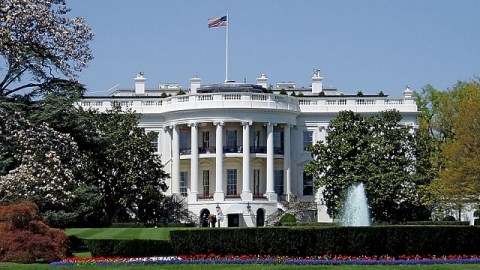Should the White House Have an Artist-in-Residence?

Every May brings with it a new crop of college graduation speeches. This spring, few (maybe none) were as though-provoking as multimedia artist Laurie Anderson’s at the School of Visual Arts in New York City last week. Speaking in front of a graduating class of artists setting out on their careers (full video here), Anderson centered her talk on her experience as the first (and last) artist-in-residence at NASA. Weaving a fascinating argument on how mutually beneficial that relationship was, Anderson called for an artist-in-residence in the U.S. Congress, the Supreme Court, and even the White House. In an era of increasing budget cuts and demands for smaller government, is an artist-in-residence in the White House an unnecessary luxury or something we can’t afford not to have?
Anderson reminisced about her days as the official NASA artist-in-residence rubbing elbows with robotics engineers, nanotechnologists, and even team members of a project to terraform Mars for human habitation when we’ve ruined Earth’s ecology. (Don’t worry, they’ve got a 10,000-year timeline for that one.) She recognized great similarities between artists and scientists in that neither knows what they’re looking for. Both fields involve discovery and voyages into the unknown and an uncertainty regarding just when you’re actually finished. Anderson quoted nanotechnologists talking about how even Einstein rejected some theories for not being “beautiful” enough, making the art and science connection even clearer. Alas, that creative crossover generated by multidisciplinary interaction met an ignoble end at the hands of an austerity-minded senator. Anderson joked about that senator perusing NASA’s budget and thinking, “A few billion for this, check; a few billion for that, check; $20,000 for an artist-in-residence!?! This is an outrage!”
Although Anderson calls for an artist-in-residence in the White House and other sites of political power, she resists the idea that artists have the responsibility to make the world better and even asks the key follow up question of “better for whom?” Early on in the address, Anderson alluded to Karl Rove, senior advisor and Deputy Chief of Staff to former President George W. Bush, as an “artist” in the sense that he created a kind of reality in the same way that an artist could. You might not agree with the reality painted by the man known as “Bush’s Brain,” but you have to agree with Anderson that Rove definitely had a vision that he made a reality during his residence in power. Instead of propaganda or radicalism, however, Anderson sees the chief responsibility of a hypothetical artist-in-residence in the White House as championing freedom, which she calls “the ground of absolutely everything.”
I’m trying to think of a situation of an American president having an artist-in-residence and failing. JFK came close (with Jackie’s prodding) by having Robert Frost read at his inauguration and bringing artists of all stripes to White House dinners in a kind of salon, but those efforts were more in the name of displaying America’s imperial muscles than in engaging artists in matters of policy where freedom was involved. More often you see isolated cultural moments such as President Obama’s awarding of the Medal of Freedom to artists such as musician Bob Dylan and author Toni Morrison. Although Dylan and Morrison know mountains’ worth about freedom, I doubt either were tapped for more than a photo op during the exchange.
But what if there was an artist-in-residence in the White House? Imagine a verbal artist such as Stephen Colbert or Lewis Black in cabinet meetings chiming in with their two cents on policy matters. It would be like the days of kings having a fool (or “foole,” as George Carlin preferred) by his elbow, mocking and teasing royal power with the irritating truth. Is Kennedy’s Camelot the same with Lenny Bruce in the corner? How would the Nixon Administration have handled Richard Pryor? Go even farther back and ask if the Gilded Age is the same if Mark Twain’s there to speak truth wittily to power. When I think “verbal artists,” I’m obviously thinking comedians with a social conscious, but visual artists could certainly speak to the presidency through paintings, sculptures, etc., assuming that the president was able and willing to listen.
The obvious question in response to my main question is, “Who’s going to pay for this?” Anderson’s allusion to Rove the artist already answers that one—we already have an artist-in-residence (or more than one) in the White House already, whether we admit it or not. If every administration has a “vision,” then they have some “artist” creating it. Why not have another artist questioning and challenging that vision with a vision centered on the freedom of the people? I think the founding fathers would have approved. Nominations, anyone?





